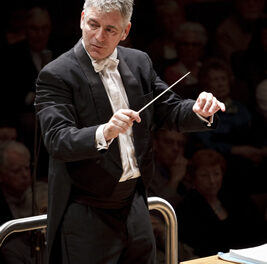Towards the end of his life, suffering from depression (“melancholy”), Renaissance composer Orlando di Lasso (a.k.a. Orlandus Lassus, 1532-94) set to music twenty Italian poems by Luigi Tansillo (d.1568), These poems, part of an unfinished work, dealt with the intense lamentations of the apostle Peter as he recalled his denial of Jesus and his abject longing for death after Jesus’ eyes met his from the cross (Luke 22:60b-62).
Orlando’s settings of Tansillo’s texts plus a concluding Latin motet, the whole entitled Lagrime di San Pietro (Tears of St. Peter), were presented in Duke Chapel by the Duke Vespers Ensemble, augmented by recorders, sackbutts, and a portatif organ.
Curiously enough, the composer makes little attempt to portray in his music the intense texts, rather using them as vehicles for music with which to meditate on them. Only once, in the eighteenth section, does the music appear to echo the text “I saw the lame walk.” Perhaps as he approached his own death, Orlando was himself looking for a serenity and a forgiveness which would serve as his pathway beyond his earthly life.
Whatever the reasons, this last of his compositions is a masterwork of its style, all the more powerful because its upward progress through the prevalent modes of Italian Renaissance music is not obvious to the listener.
Unlike most performances and recordings of this work, Conductor Brian Schmidt’s interpretation included much variety within the full ensemble of 23 voices, three recorders, three sackbutts, and organ continuo. Some movements used as few as two singers, some seven, and some, the entire group. Schmidt’s decision to use instruments was totally in keeping with performance practices of Lasso’s (as he is also known) time, and is an element unfortunately lacking in most currently-available recordings. The performance was recorded, leading me to hope for a forthcoming CD.
The performance was, in a word, exquisite. In the darkened chapel, the setting sun illuminated the brilliant colors of the chancel window’s many-hued stained glass, including the golden representation of Peter himself; the Gothic acoustics carried the ensemble’s sound to the farthest reaches of the nave, providing an extended peroration for each concluding chord. The choral blend and balance were superb, the solo voices secure and musical. The chapel was comfortably full, albeit not of students, more of whom should take advantage of the opportunity to hear music of artistic and historical significance performed at such a high level of musicianship. The Vespers Ensemble is a credit to Duke University; while it does not command the following of the justly-well-known athletic programs, it sets a standard of performance to which all should aspire.











